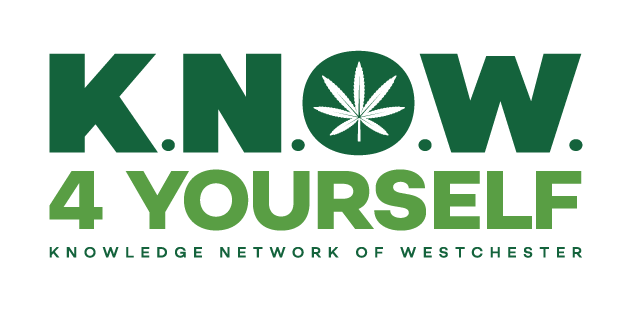TOPICS
MARIJUANA MYTHS & FACTS
MARIJUANA USE AMONG OSSINING STUDENTS

Marijuana use has increased since 2019 among 11th and 12th graders by as much as 33%.

Marijuana use rates increase significantly between 7th and 12th grade.
GROWING USAGE, UNKNOWN DANGERS

Marijuana is the most widely used drug in the United States. There are serious threats we know marijuana poses to our community and the people in it, and other harmful effects that continue to emerge as the way it is used evolves. As marijuana use grows amongst people of all ages and genders, including teens and pregnant women, understanding these risks is more important than ever.
The impact of liberalized state and local laws regarding marijuana sales and possession is not entirely clear. The surrounding issues are complex, and include consideration of criminal justice and equity, public health, economic impacts, and more. But some facts are simple, clear, and uncontroversial: marijuana is a powerful drug and presents a risk to the health and development of young users.
There is a common misconception that marijuana is a “soft drug,” as compared to a “hard drug” like cocaine or heroin. The reality is, all drug use carries serious risks, and marijuana is no exception.
THC: THE STRAIGHT DOPE
THC is the primary psychotropic chemical in marijuana. That means it’s the substance primarily responsible for marijuana’s effect on mood, cognitive abilities, sensory perception, and bodily control–all of which can be impaired by use.
It is also possible to concentrate THC from marijuana resins, creating oils and other substances with much higher THC levels—making them that much more dangerous to users. The marijuana cartridges used in vape pens contain such concentrates, increasing the risk of over-intoxication for those who vape marijuana. Edibles can also contain more concentrated THC, and the THC also takes longer to enter a user’s system. This makes it easy to ingest too much before feeling any effects.
Over-intoxication and intense use increase the risk of dependence and other ill effects.
THC’s Effects on Body & Brain
Marijuana & THC
Marijuana refers to the dried leaves, flowers, stems, and seeds of the Cannabis sativa or Cannabis indica plants. The most abundant and active psychoactive chemical in these plants is THC, which can be concentrated into oily powders (hashish or hash), resins, and oils or tinctures that can be smoked, “vaped,” or used to make edible marijuana “treats.” The more concentrated the THC, the more severe the effects of use will be on the brain and body.
THC in the Brain
THC enters the bloodstream almost immediately after smoking or vaping, and over a longer time if ingested through an edible. When eaten, it takes a long time to reach the brain, meaning the effects of marijuana might actually increase even as blood concentrations decrease. Once in the brain, THC attaches to specific receptors that stimulate certain unique responses while inhibiting normal functions.
Other Cognitive Impacts
THC doesn’t just produce a “high” feeling that becomes harder and harder to achieve. While users are trying to get that feeling back, they are also disrupting connections in the brain that allow for logical thinking, creativity, forming and accessing memories, perceiving and responding to the surrounding environment, and making rational decisions. Users are often paranoid or frightened, and all of these effects can persist long after marijuana use has ended.
Smoking/Vaping & Physical Health
Marijuana use of all types promotes lethargy and laziness, and can lead to overeating, both of which are dangerous to physical health. Smoking and vaping marijuana also present significant health risks to the lungs and cardiovascular system. Severe and sometimes fatal lung ailments have recently been linked to marijuana vaping in multiple studies, and researchers are busy identifying the precise mechanism.
SOURCE: National Institute on Drug Abuse (NIDA)
MARIJUANA ADDICTION & AFFLICTIONS
Despite its increasing use, marijuana remains a potent drug that can have immediate and long-term consequences on the health of users, especially teen users with still-developing brains. Thinking, memory, and learning ability can all be impaired over the long-term—perhaps even permanently—when the brain’s connection-building processes are disrupted by marijuana use in adolescence.
Other effects of marijuana use can include:
- damage to the lungs and cardiovascular system
- altered senses and perception
- distorted sense of time
- unpredictable & severe changes in mood
- impaired movement & control of the body
- difficulty thinking
- memory loss & difficulty forming memories
- hallucinations & delusions
- psychosis, with high doses or long-term use
Like any drug, marijuana has the potential to become addictive. As the brain adjusts to exposure to marijuana, the drug’s effects are reduced, leading users to smoke or ingest more and more to get the same high. Symptoms of marijuana withdrawal–when an addicted user tries to quit–can also be severe, and include restlessness, aggressiveness, cravings, nausea, cramping, and more.
The safest choice? Never start using marijuana in the first place.
Marijuana and the Legal Landscape
NYS State Law
Adult-use marijuana is now legal in New York State. The Marijuana Regulation and Tax Act (MRTA) passed in March 2021, has many provisions including allowing adults to grow a limited amount of marijuana privately, consume marijuana anywhere smoking is permitted, enabling the establishment of retail stores to sell marijuana products.
Marijuana possession is no longer a crime in New York State, and with the intention of addressing some of the past harms of historic criminalization, the MRTA* enables the reclassification of past convictions and resentencing of individuals who are incarcerated due to marijuana-related offenses.
Further,the MRTA gives municipalities the choice whether to allow marijuana retail stores, or dispensaries, and/or on-site consumption lounges. Ossining has decided to allow stores, but not lounges.
Click here for more on NYS Law
*The Marijuana Regulation & Taxation Act (MRTA) legalizes the production, distribution, and use of marijuana. It removes marijuana and marijuana products from New York’s Controlled Substances Act and allows for the regulation of marijuana under the supervision of the Bureau of Marijuana Policy. This legislation will regulate the distribution and use of marijuana and marijuana products similar to the way alcohol and tobacco are regulated.
Problems of Liberalizing Laws
Research is ongoing to determine the impact of liberalizing laws and legalized marijuana. At the same time, in States with longer histories of legalization, there is evidence of increased rates of marijuana-related driving fatalities, more emergency room visits and accidental ingesting of marijuana and other worrisome outcomes. It may be that there are other negative consequences for individuals and their communities which are only beginning to emerge.
Marijuana Marketing
In addition to liberalizing laws, intensive marketing campaigns by marijuana businesses are trying to convince the public their “product” is safe, natural, fun, and even an expected part of “normal” life. There even appear to be attempts modeled after alcohol and tobacco companies to market marijuana to teens and even children. The truth is most people don’t use marijuana, and it isn’t any more “safe” or “natural” than any other illegal drug.
Marijuana & DWI
The THC in marijuana affects cognitive abilities, motor function, reaction time, and has other debilitating impacts. All of this makes it very dangerous to drive while under the influence of marijuana. It’s also illegal. If you commit a driving infraction and are found to have any marijuana in your system, you can get a DWI, which can have serious legal consequences, including loss of your license, a criminal record, and potential impact on college admissions.
KNOW 4 YOURSELF

K.N.O.W. 4 Yourself is a collaborative campaign to raise awareness and educate parents, caregivers and communities about the negative impact of marijuana use on youth. The collaborative consists of coalitions and agencies throughout Westchester and Putnam Counties with the common goal of supporting youth and families in making safe, healthy, and informed choices. The campaign is grounded in science and supported by current published research that has been peer-reviewed.





